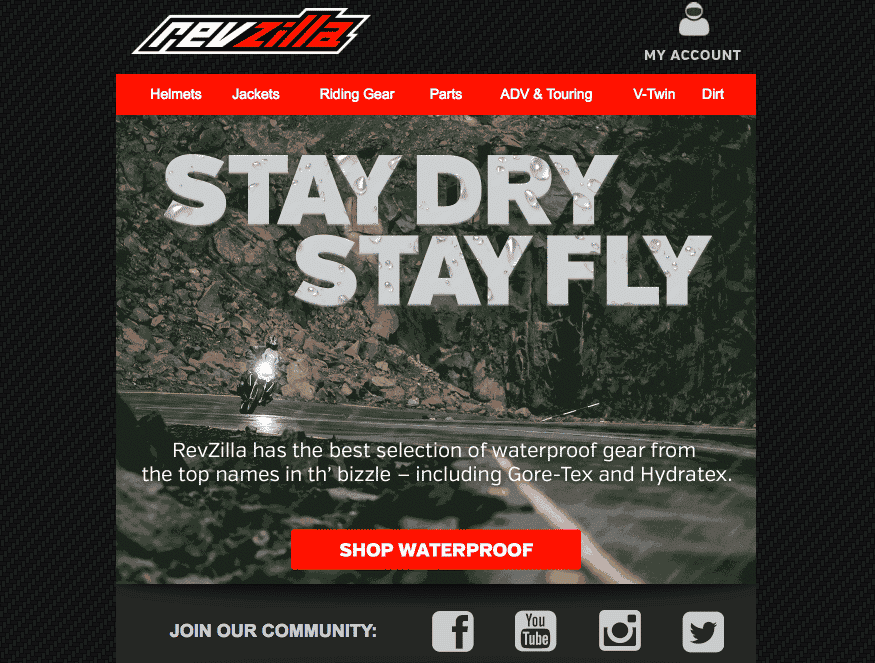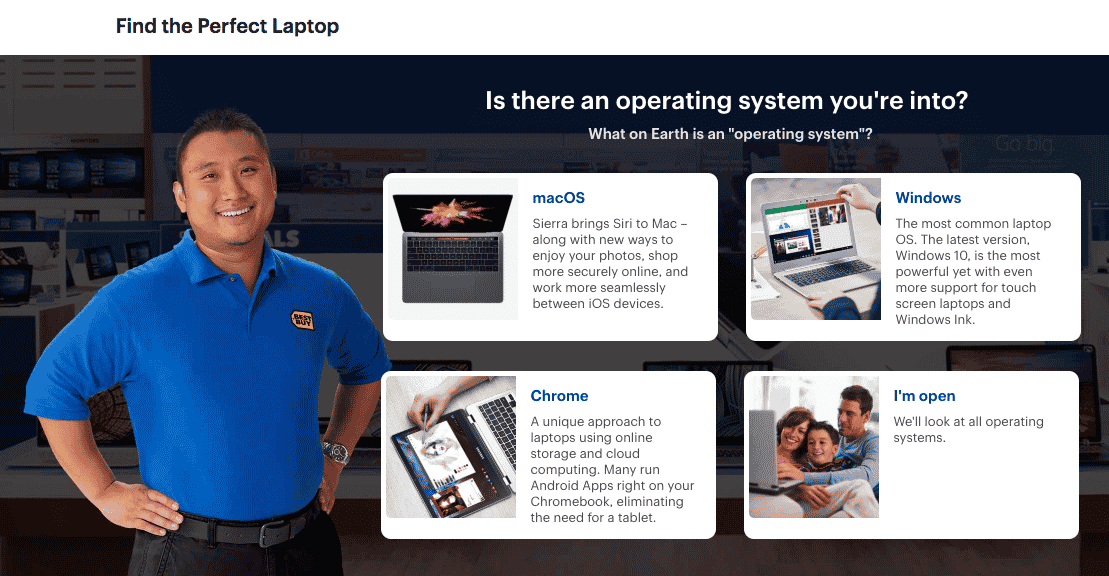Article
5 Best Practices for Sports and Outdoor Brands From REI, RevZilla and Best Buy
June 26, 2018

To thrive in the age of Amazon, sporting goods and outdoor brands must recognize that they have an edge. But they must also recognize that they’ve been using the dull side of the knife.
The U.S. outdoor and sporting goods market is a big one, worth $120 billion. Amazon accounts for less than 5% of those sales. However, the ecommerce giant’s growth rate far outpaced that of the individual brands: a 20% increase in sales year-over-year vs. 5%.
Amazon has become a one-stop shop for essentially everything — and it’s helped train consumers to expect fast, free shipping and top-notch personalization, to boot. Sporting and outdoor brands can stay ahead. It just requires more than providing an excellent customer experience, as that’s where Amazon has the edge. To thrive — or survive — brands like Dick’s Sporting Goods, REI and others must leverage what Amazon doesn’t have: expertise.
Sporting equipment is an investment. A decent pair of skis can cost $1,000, before you’ve even bought the boots, poles, that retro onesie… or lift tickets. Big, oftentimes technical, purchases require more customer confidence than when you, say, give a new laundry detergent a spin. Here are five best practices for leveraging expertise specifically for sporting and outdoor retailers and ecommerce players, drawing inspiration from both inside and outside this vertical.
1. Contextualize Your Customers Like RevZilla
Context is especially important for sports and outdoor brands. Not every activity is suitable for every season and not every customer even has every season. In Montana, June is prime mountain biking season, a sport that’s not so prevalent in Miami. And in the winter, while skiing takes over in Montana, Floridians don’t even see the snow.
To make the most from your marketing, always consider geography and climate alongside an individual’s specific interests. Think about a customer who purchased snowpants recently. Where does she live?
According to the SnowSports Industries America’s 2017 participation study, the three states with the highest number of skiers are California, New York and… Texas, which has little snow and zero ski resorts (but plenty of money). If your customer lives in Dallas, he might be an active skier, but most likely not an exceptionally regular one, given his geography. Does his purchase history express interest in other activities? Promote something related to one of those, since his ski gear likely lasts longer than average.
Need Inspiration? Check out RevZilla. This motorcycling focused retailer uses purchase history and geographic cues to personalize email marketing. Summer is prime motorcycle season so the brand tends to be a bit more active with product promotions. During the fall and winter months, RevZilla focuses more on content to nurture consumers to purchasing during peak buying cycles. The brand also makes sure to promote gear such as rain jackets when it’s raining outside, for example.

2. Master Mobile Like REI
The average American checks their phone every 12 minutes. So, 80 times a day. And as smartphones become more sophisticated, we rely on them for more things, including researching products, posting about brands on social media, and participating in loyalty programs.
Mobile is a crucial piece of the omnichannel journey, given how integrated smartphones are into every aspect of people’s lives. This is especially true for brands related to athletics. According to Flurry Analytics data, fitness apps have grown 330% over the previous three years. More than three-quarters of those consumers consult their fitness apps multiple times a day, too.
While you don’t have to launch a fitness app to go along with product sales, you must be thinking about how your mobile strategy enhances your customer experience, augments the data you have available to engage within context (see recommendation 1), and builds loyalty so that you can translate that into retention.
Need inspiration? Check out REI. REI has a unique mobile strategy, with eight different apps, all with their own value proposition. One is for shopping, another serves as a repository for national park maps, and others focus on specific sports. These apps were all created as part of one ecosystem that caters to customers’ needs – even those that are not based on selling. We’d like to see REI take this approach even further by connecting the various data sets from these apps to the marketing of products. If someone is researching Appalachian Trail hikes, a push notification or email from REI with products for hiking during upcoming seasons would be well timed.

3. Cater to Comparison Like Best Buy
Buying sportswear can be overwhelming because unlike traditional clothing items, nuances in product aren’t so obvious. What makes one snowboard different from the next? A salesperson at Burton certainly knows what separates an “instigator” from a “flight attendant.” But to the naked eye, they’re the same product, except one is blue and the other costs $95 more.
Some snowboarders are new to the sport. Others are expert-level, but may be new to buying their own equipment after years of rentals or generous parents. While those two athletes have completely different skillsets, they’re at the same level of shopping. Go beyond the standard comparison chart (but have this, too) by personalizing comparison experiences.
For anonymous digital customers, don’t just recommend other products on a page with “others who liked this also liked” messaging; actually show details on those products in the recommendation and how they compared to the product being viewed. For buyers that you know, collect data explicitly around each user’s goals and perceived level within a sport. With that, as well as implicit interest data, retailers have a better sense of which products to recommend.
Need Inspiration? Check out Best Buy. The brand outlines the specs of its various products in a very digestible manner. If you’re looking for a new laptop, Best Buy’s website helps you narrow down the options. Once you confirm that you’re a Mac loyalist or a PC person — or educate yourself on the difference, another option — Best Buy takes it from there. The Find the Perfect Laptop feature shows side-by-side charts comparing your selections based on specifications, reviews, promotions and availability. We’d also love to see an option to email the comparison to yourself, as well as a Geek Squad chatbot to answer any possible questions.

This is just a taste; download the full guide here. To learn how Sailthru can help your brand achieve a competitive advantage over Amazon, click here for a demo.
The State of Brand Loyalty in the U.S. in 2023
Related



